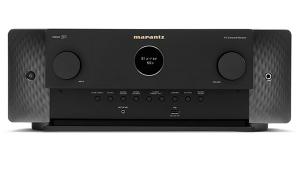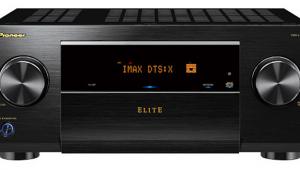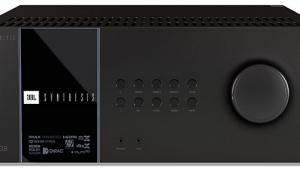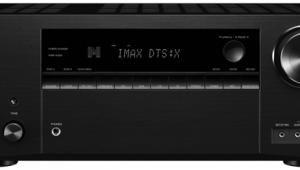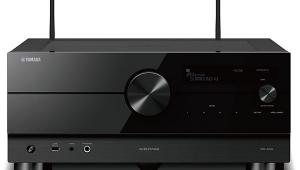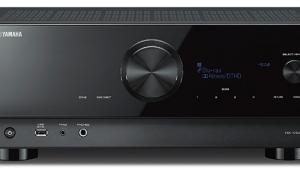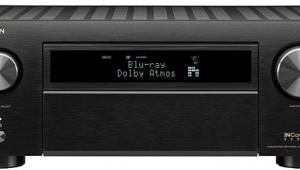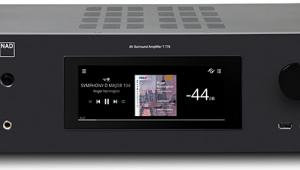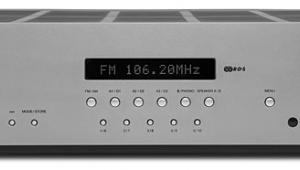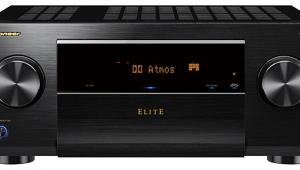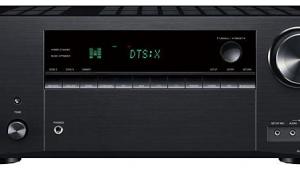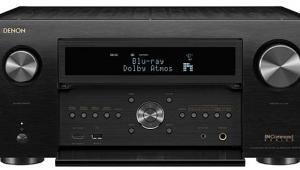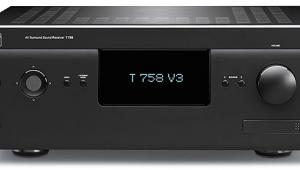Marantz SR6006 A/V Receiver
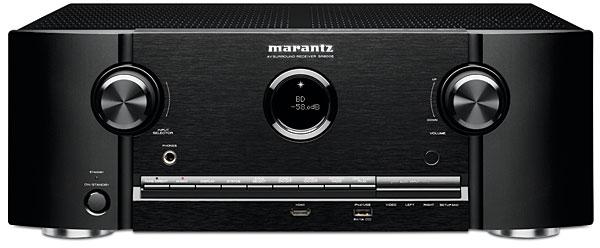
Few brands offer as many entry points into audiophilia as Marantz. The vintage angle alone is priceless. Cruise eBay and Audiogon for everything from pricey restorations of vintage tube components to affordable, classic stereo receivers from the 1970s. The present-day Marantz, an honored member of the D&M Holdings family, is the brand to look to for answers to questions like, “Does anyone still make a decent-sounding, standalone CD player?” In some future lifetime, I may explore the potential of such bleeding-edge Reference Series components as the SC-7S2 stereo preamp ($6,500) or the TT-15S1 turntable ($1,500) with the acrylic chassis and platter. But Marantz’s lines of A/V receivers and surround separates have plenty of meat on the bone for both high-end and real-world home theater buffs. In fact, many of Marantz’s multichannel products are adorned with the same distinctive porthole display as the highest-performing members of the brand’s two-channel lines. Putting a round display on a product doesn’t necessarily guarantee quality, but the migration of this cosmetic signature does suggest that Marantz holds surround audiophiles and stereophiles in equally high regard.
Feature Rich, High Performance
Surround-receiver manufacturers tend to fall into two groups. Most of them are feature-obsessed and turn over their lines relentlessly. Then there are the audiophile manufacturers who devote more of your spending power to sound quality, but sometimes fall behind in the features race. Marantz carefully treads a path between the two, maintaining a small line that turns over only as often as it reasonably needs to. This receiver gives you the best of both worlds. Its feature set is competitive alongside feature-rich, mass-marketed models, yet it performs more like a higher-end (and higher-priced) receiver.
The two newest members of the Marantz AVR line were introduced in mid-2011. These midline models are the SR6006 ($1,200) reviewed here and the step-down SR5006 ($800). At the lower end of the line are the NR1602 ($650) and NR1402 ($400), which made their debuts about the same time. The top-line model is still the SR7005 ($1,699), unveiled in mid-2010.
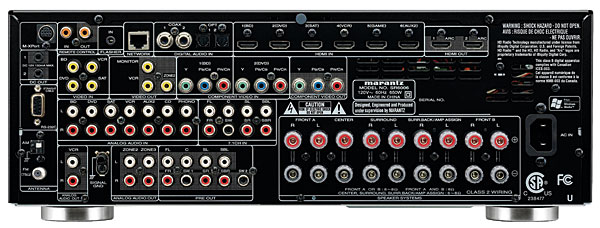
Marantz receivers have a distinctively sculpted chassis with broad curves at the sides. The porthole display is cute, although it offers limited real estate for status displays. Unlike its older big sister the SR7005, the SR6006 does not have a door below its porthole display that flips down to reveal a larger and more conventional one.
The back panel shows evidence of foresight and good taste. It includes a moving-magnet phono input—we expect no less of a company that offers three turntable models. Wireless connectivity includes both Apple AirPlay—allowing iOS devices to push content to the receiver—and Bluetooth via Marantz’s RX101 Bluetooth adapter ($100), which plugs into an M-XPort jack.
In addition to interfacing with a smartphone, the Bluetooth capability gets in additional use with the company’s IS301 iPhone/iPod dock ($250). The IS301 is actually a three-piece kit. The dock itself communicates wirelessly with a connection block that has hardwired A/V outputs. It also comes with its own remote control. With the wireless dock next to your armchair, you can just pick it up and operate your iDevice with its own touch screen or click wheel. Marantz believes you’ll prefer this to replacing Apple’s beloved interfaces with an onscreen display. As the company’s Website notes pointedly, “That means there’s nothing new for you to learn.”
 The only drawback is that if you want to stream photos or videos—which Bluetooth does not support—you’ll have to run Cat5 cable between the Ethernet jacks of the dock and the connection block. The SR6006 also supports another wired Ethernet connection compatible with DLNA 1.5 to pull media out of a router-connected PC. Music-streaming addicts can get their fix via Rhapsody or Napster; Pandora personalized Internet radio and over-the-air HD Radio are supported. Unlike its predecessor, the SR6005, the SR6006 does not support SiriusXM Satellite Radio. For photo sharing, it supports Flickr.
The only drawback is that if you want to stream photos or videos—which Bluetooth does not support—you’ll have to run Cat5 cable between the Ethernet jacks of the dock and the connection block. The SR6006 also supports another wired Ethernet connection compatible with DLNA 1.5 to pull media out of a router-connected PC. Music-streaming addicts can get their fix via Rhapsody or Napster; Pandora personalized Internet radio and over-the-air HD Radio are supported. Unlike its predecessor, the SR6005, the SR6006 does not support SiriusXM Satellite Radio. For photo sharing, it supports Flickr.
This 7.1-channel receiver has nine sets of binding posts. Why? To facilitate the use of surround modes with height and/or width enhancement. These include Audyssey DSX, which offers both front-channel width and height enhancement; Dolby Pro Logic IIz, another height mode; and the various back-surround-equipped modes we’ve known for years (Dolby EX, DTS-ES, etc.). So you’re at liberty to connect a 5.1-speaker array (the bedrock standard in surround sound), plus one additional option (height, width, or back), although you can never run more than seven amp channels plus the sub channel simultaneously.
The Audyssey suite also includes MultEQ XT for auto setup and room correction. Many rooms suffer from acoustic defects that Audyssey can work around handily. Over many prior reviews, I’ve found it reliable. Also included are Audyssey Dynamic EQ and Dynamic Volume, which together improve the quality of low-level listening. They are especially helpful with steroidal movie soundtracks.
Like its stablemate Denon, Marantz offers an attractive (and similar-looking) graphic user interface with a setup wizard that easily takes you through language selection, speaker connection, Audyssey setup and room correction, source-component setup, and network connection. While many users will want to just run the wizard and go, others may want to second-guess certain settings. For instance, MultEQ correctly pegged my speakers as Large (with full-range bass response), but I reset them to Small with a subwoofer crossover of 80 hertz (per THX practice, to let my sub handle more of the bass).

